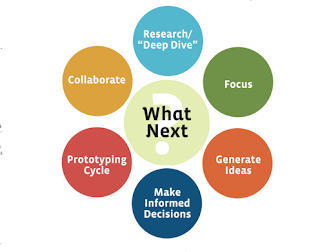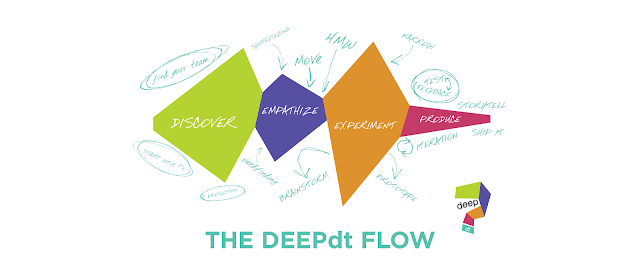
DEEP-DIVE PROTOTYPING
DEEP-DIVE PROTOTYPING
A deep-dive process is a focused, team approach to developing
solutions to specific problems or challenges. It is intended to harness
the ideas of everyone in a team in a creative, stimulating, focused,
energetic, fun, and useful way.
 |
| https://bussinessideas.namanmahajan.com/ |
The idea
A deep dive is a combination of brainstorming and prototyping
(where an initial potential solution is explored and developed). This
is an approach that anyone leading a change initiative can use to
identify actions that can move a business forward. A deep dive can
be completed in an hour, a day, or a week.
The main stages in the deep-dive process are:
• Building a varied team.
• Defining the design challenge.
• Visiting experts.
• Sharing ideas.
• Brainstorming and voting.
• Developing a fast prototype.
• Testing and refining the prototype.
• Focusing on the prototype and producing a final solution.
 |
| https://bussinessideas.namanmahajan.com/ |
In practice
IDEO, a prominent American design company, believes that there
are several stages in deep-dive prototyping (for further information
see The Art of Innovation: Lessons in creativity from IDEO, America’s
leading design fi rm by Tom Kelley and Jonathan Littman).
• Understand your market, customers, technology, and perceived
constraints.
• Observe people in real-life situations.
• Synthesize and organize the key themes from the first two
phases.
• Visualize: this often involves intensive brainstorming and
discussion. Imagine new concepts and ideas around the main
themes of the design.
• Prototyping is next, and this involves building ideas and physical
brainstorming.
• Refine and streamline your ideas. Again, brainstorm ways to
improve the prototype and overcome obstacles, and narrow and
focus your concepts. Evaluate and prioritize your ideas, and
decide how they will be implemented.
Other valuable aspects of creative problem solving that may be
applied when time is tight include:
 |
| https://bussinessideas.namanmahajan.com/ |
• Trying first (and asking for forgiveness later).
• Test marketing.
• Ensuring that teams are as varied and diverse as possible.
• Seeking external input.
• Reducing, and virtually eliminating, hierarchy.
• Involving people, generating a sense of play, and working without
boundaries.
• Being flexible about working arrangements.
• Accepting that it is all right to try and fail.





0 Response to "DEEP-DIVE PROTOTYPING"
Post a Comment